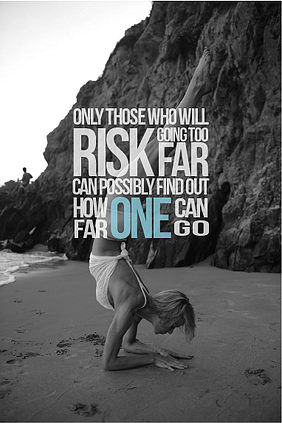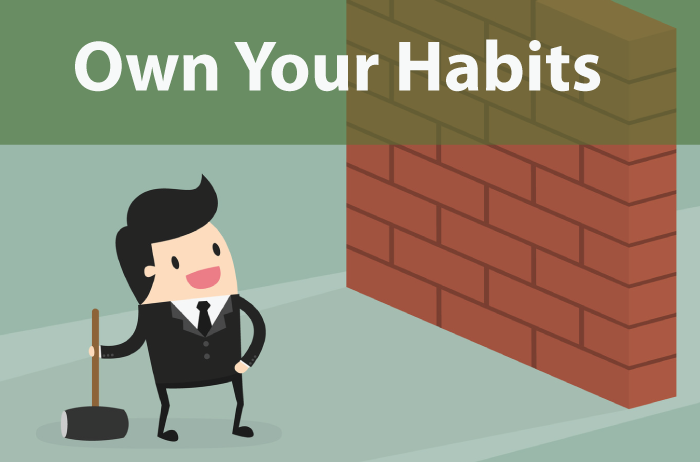Are you a flexible business leader?
There’s a lot of talk these days about cultivating flexibility into your business model, and how small businesses and start-ups have an innate flexibility that the mammoth companies will never be able to reclaim. Remember when you were a kid and touching your toes was no-sweat and handstand competitions were the norm? Well, that’s what it feels like to be a small business these days while the large corporations seem to be like our parents who couldn’t keep up as we ran circles around the house.
Flexibility sounds great, but there are definitely dangers of injury. Here’s seven ways your business can stay flexible without collapsing with every whim of change and innovation.
Here are 7 ways to use flexibility to become a visionary leader.
#1 Light a Fire, Gain Insight

At the core of every yoga practice is the breath. Breathing makes stretching and strengthening safe for three main reasons:
- It creates heat in the body which makes stretching safer
- The breath keeps your mind focused on what you’re doing in the present moment which will allow you to immediately make adjustments if you sense any pain.
- At the same time it allows you to move through discomfort rather than run from it.
As a business, practicing flexibility requires a constant and steady drive that keeps you mindful and present. It’s common for a new yoga student to try to mimic their instructor’s every move even if it hurts. Don’t do this. Your instructor is there to show you what is possible for the future. Your breath will alert you to what is possible for you in the here and now.
So what can “breathing” do for you on your path to visionary leadership?
- Keep the fire lit: Stay focused on the passion of what you do best. This is your disruptive innovation that resides at the core of your business and spreads to all the appendages.
- Be present. Don’t get so obsessed with the end-goal that you miss problems or opportunities that are right in front of you. If you’re present you’ll know when to move from something that’s causing pain, or when to go deeper into a tedious, but necessary, process.
#2 Be Willing to be a Beginner Every Single Morning
Years ago I was a yoga instructor, and I found it fascinating that every beginner tried to act like an expert, and every expert forgot the advantages of being a beginner. Everyone wants to be an expert. However, expertise can be a trap.
It’s incredibly painful, and sometimes embarrassing, to be be new at something--especially as an adult. Kids are so much better at just flinging themselves into something new, and they’re quite confident in their abilities despite the realities of their inexperience. As an adult we know how bad we suck. But we know we can get better.
Ira Glass talks about “the gap”: where, in the beginning, our abilities don’t match our taste, or what we know we could accomplish or create.
Be willing to be a beginner. Use all the supports you can get until you can safely fly on your own. I often see yoga students shy away from using supportive props because they don’t want anyone to think they are weak or inexperienced. Own your beginner status, and utilize all the support, mentors, and help you can get.
Remember, that woman next to you in yoga class who is rockin’ the handstand, she was once a beginner too who practiced against a wall.
And everyone loves to help beginners. If you act like a know-it-all no one will help you, and that is not what you want. Ask questions. Get help. And keep practicing.
On the other hand, if you are already an expert, you might want to approach your day as if you were a beginner again. Beginners have the advantage seeing all of the options. Try not to get trapped and limited as an expert. Re-ignite that optimism and curiosity of a beginner.
- What questions do you have? Who can help you?
- What do you need to do to create the business you've imagined?
- Who is an expert/mentor you can look to?
- How can you use your beginner status to your advantage for greater flexibility?
#3 - Show Up Every Day
Flexibility is a result of showing up every day. Sometimes the easy part is the disruptive innovation--the first day or year of excitement of a new idea. The tough part comes when all the mundane and complicated tasks start to show up. With all the talk about flexibility and disruptive innovation these days, Gary P. Pisano reminds us that

Flexibility and innovation won’t get you anywhere unless you’ve got the sustaining strength to go with it. Don’t make the mistake of limiting your practice to gaining flexibility when it is the tediousness of strength-building that will prevent you from collapsing when you finally have the flexibility to attempt that backbend you’ve been working on.
- Is your business perpetually stuck in the innovation phase?
- How can you sustain your core innovation to make it profitable?
- What areas of your business need strengthening in order to support your innovation?
#4 Flip It Upside-down

If you want to be an innovator with flexibility, yes, you’re going to have to go beyond what you are comfortable with at some point. You’re not going to try a free-standing handstand on your first day of yoga, or even within the first month. But, eventually, you have to step away from the wall and the instructor and give it a shot. You’ll probably fall multiple times. But the magic of showing up every day is that just at the moment you don’t think you’re going to do it, your feet are up in the air and everything is stable at the same moment that you’re upside-down.
I remember the first time I did a free-standing handstand. I was so shocked by the feeling of being upside-down that I lost my focus and fell flat on my face--a nose bleed resulted, but I now knew I could do it, and I smiled despite my emergency run to the bathroom.
Take risks. You’re never going to feel ready. You’re never going to feel like everything is perfect and in place. Trust yourself after months of practice and just go for it. You’ll fall, but you’ll get up too, knowing what it feels like to fall, and then knowing what it feels like to fly.
- What is holding your business back? Are you waiting for more information that might never come? Are you waiting for absolute assurance rather than just jumping in?
- What are you afraid of? Why?
- Are you confident in your ability to take risks and then assess problems when you inevitably fall the first few tries?
#5 - Breathe
 Are you still breathing? Is the fire still lit inside, and are you focused on the present state of your business? Are you alert? Are you calm and dealing with problems step-by-step as they come at you? Are you making appropriate adjustments?
Are you still breathing? Is the fire still lit inside, and are you focused on the present state of your business? Are you alert? Are you calm and dealing with problems step-by-step as they come at you? Are you making appropriate adjustments?
#6 - Lay Down
The first yoga class I ever attended won me over when I realized that at the end of every class I simply got to lay down on my mat and close my eyes and breathe. After all of that stretching and strengthening I realized how important it was for me to take time to let my body process all of that movement and work.
Try taking time to let things sink in before launching into the next phase. Let you and your employees feel the effects of sustained routine and success.

However, if you stay there too long, you might fall asleep and surpass the point of rejuvenation. If you’re breathing and alert, you’ll know when to come up and move on with your day and into the next phase.
- How can your business process and absorb all of the hard work of innovating and sustaining?
- Are you rushing too quickly into the next phase before allowing your work to take hold, and reap the benefits?
#7 - Walk Away...Come Back Tomorrow
I often saw yoga students attend class after class after class in one day. Burn out was inevitable. Just because you can take advantage of your flexibility, doesn't mean you always should.
It’s true that you can have too much of a good thing. You’ll gain more insight by walking away every once in a while to take breaks. In fact, you’ll probably get most of your “brilliant” ideas and solutions when you walk out of your office door.
Just remember to come back the next day ready to stretch and breathe again.
What To Read Next:
Why It's Good To Be A Small Business
3 Steps To Taking Care of Yourself
How To Successfully Apply For a Small Business Loan
Want to Read Other Articles Like This One?
Don't forget to subscribe to our blog and get posts like this one delivered to your inbox each week or month.
















